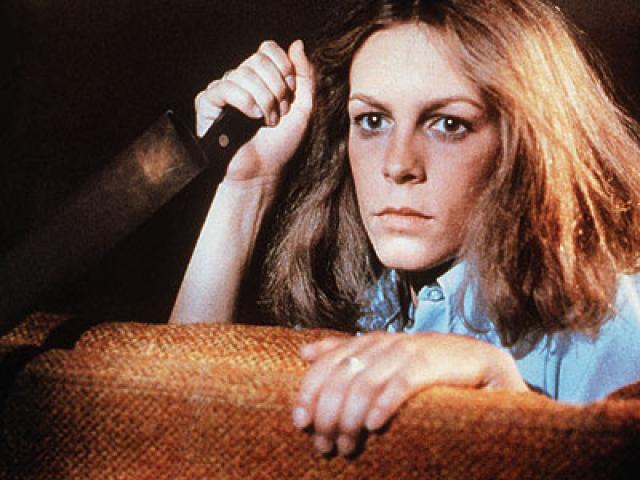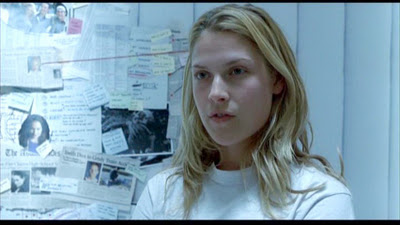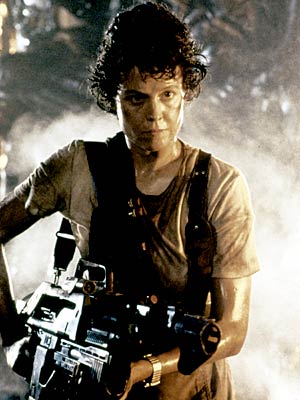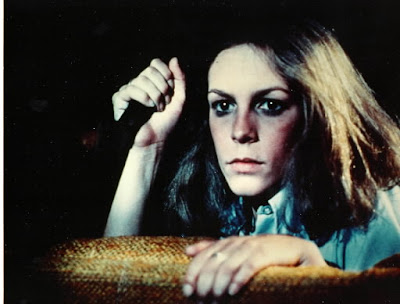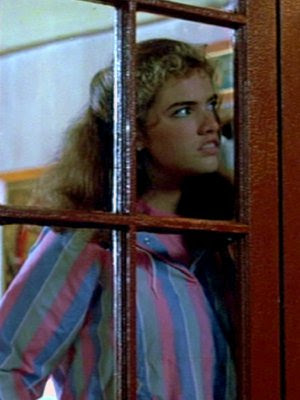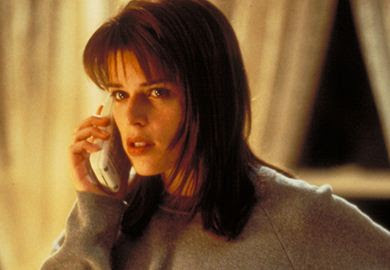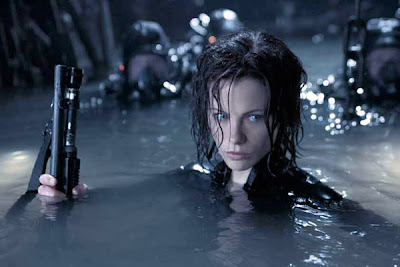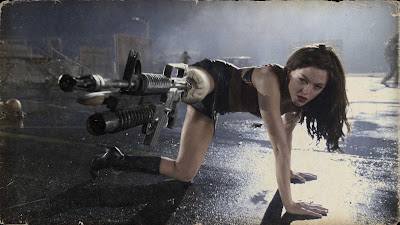Our theme week for October 2015 will be Violent Women.
In the month of Halloween, we’ll aptly be examining tropes of women and violence. There are many permutations of violent women throughout history and throughout genres. In many cases, the viewer experiences the violence of female characters as empowering. Revenge and self-defense are frequent motivations for violence, which are often coded as justified, and audiences can bathe in the cathartic violence of Kill Bill‘s Beatrix Kiddo (aka The Bride) taking vengeance on her rapist and those who betrayed her and left her for dead. We can cheer on Ripley in Aliens or Laurie Strode in Halloween because they are acting from the basic animal instinct of self-preservation.
Many women glory in the model presented by the physically capable, self-assured women of sci-fi and action genres like pre-apocalypse soldier and mother Sarah Connor in Terminator 2: Judgment Day and secret agent extraordinaire Mallory Kane in Haywire. Films like these give women the opportunity to revel in strong female bodies and in women who take charge.
Sometimes, though, violent women are coded as frightening and unknowable. They violate cultural mores. They cannot be contained within society and must, therefore, be destroyed. The eponymous heroine of Carrie is a young, timid woman who comes of age and finds enormous power inside herself, but such a power cannot be controlled or understood; it has no other choice but to obliterate itself. The film Monster, represents Aileen Wuornos, a real-life woman who had every hard luck in life, as a woman who takes revenge too far until she’s an out-of-control serial killer who must be executed. On the other hand, through the desperate and violent shenanigans of its heroines, Thelma & Louise accuses the world itself of being an ill-equipped place for women who refuse to play by rules that only subjugate them.
What is the connection between femaleness and violence? Why do we sometimes accept some types of violent women but not others? What do these value judgments say about our society?
Feel free to use the examples below to inspire your writing on this subject, or choose your own source material.
We’d like to avoid as much overlap as possible for this theme, so get your proposals in early if you know which film you’d like to write about. We accept both original pieces and cross-posts, and we respond to queries within a week.
Most of our pieces are between 1,000 and 2,000 words, and include links and images. Please send your piece as a Microsoft Word document to btchflcks[at]gmail[dot]com, including links to all images, and include a 2- to 3-sentence bio.
If you have written for us before, please indicate that in your proposal, and if not, send a writing sample if possible.
Please be familiar with our publication and look over recent and popular posts to get an idea of Bitch Flicks’ style and purpose. We encourage writers to use our search function to see if your topic has been written about before, and link when appropriate (hyperlinks to sources are welcome, as well).
The final due date for these submissions is Friday, Oct. 23, by midnight.
Carrie
Under the Skin
Foxfire
The Matrix
Crouching Tiger, Hidden Dragon
Ginger Snaps
Basic Instinct
Foxy Brown
Battlestar Galactica
I Spit on Your Grave
The Exorcist
Underworld
American Horror Story
Game of Thrones
Hard Candy
Duke of Burgundy
Haywire
The 100
Jennifer’s Body
Single White Female
Misery
Mad Max: Fury Road
Terminator 2: Judgment Day
Halloween
Alien
Sin City
Batman Returns
La Femme Nakita
Planet Terror
Aliens
Gone Girl
Friday the 13th
Kill Bill
Monster
Mommy Dearest
Thelma & Louise
Audition


